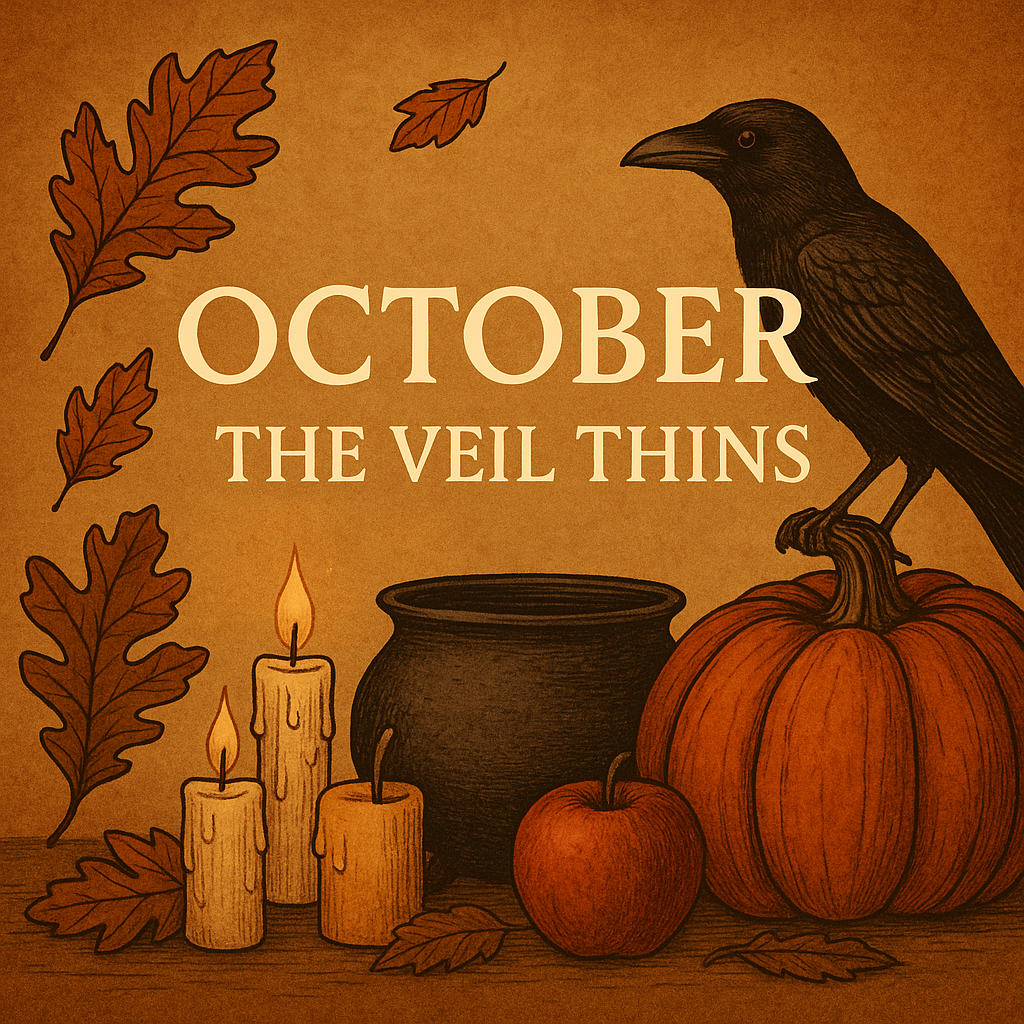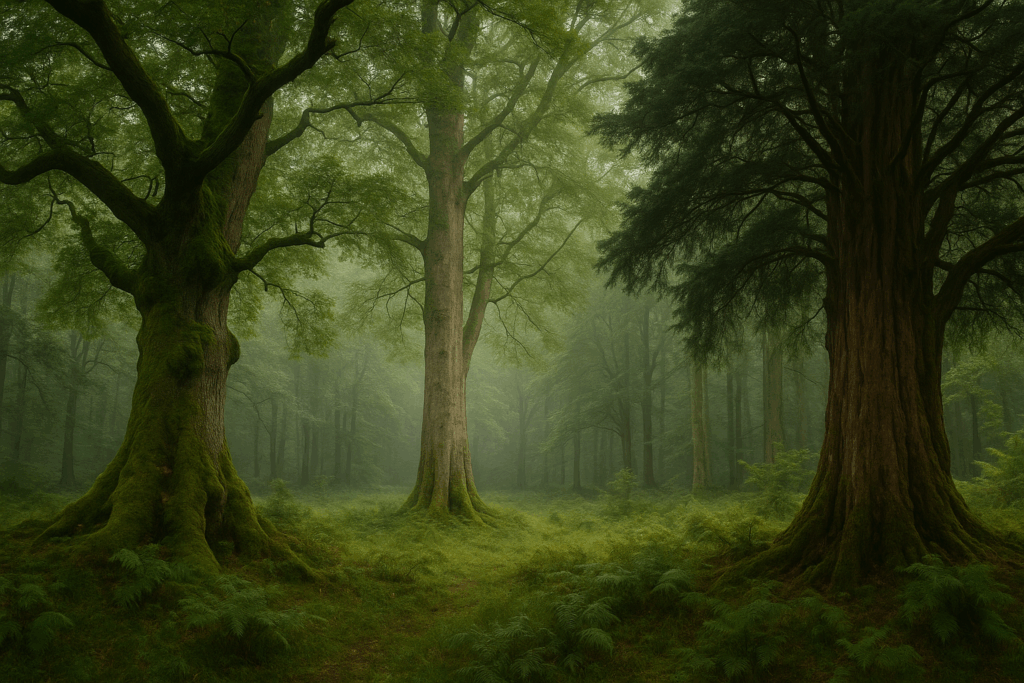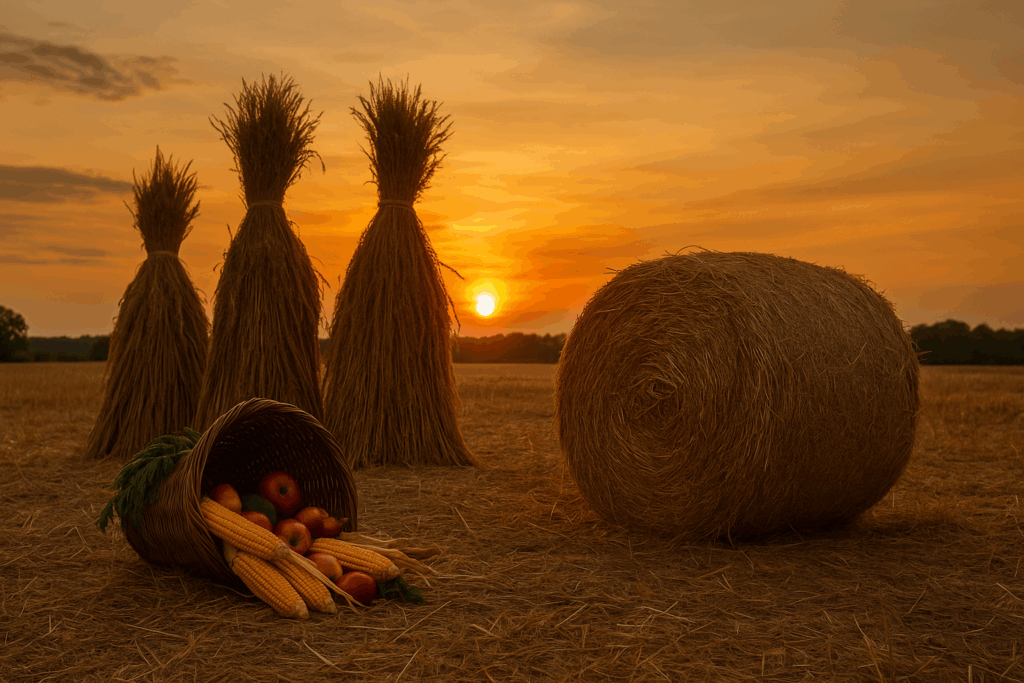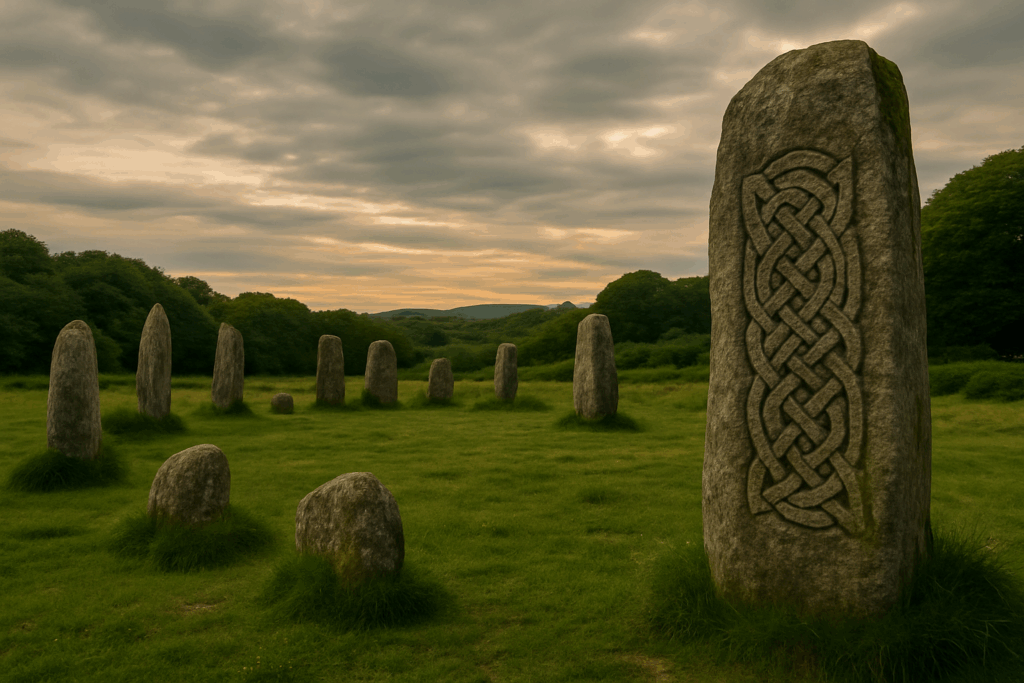October 16 – The Forest’s Hollow Heart

Entering the spirit of the wood, a meditation on silence and shadow.
There is a stillness that lives only in autumn woods — a silence not of absence, but of deep listening. The forest in October breathes slowly, each exhale a sigh of falling leaves, each inhale a gathering of shadow. When you step beneath its canopy, the noise of the human world fades, and something older takes notice. You feel it in the air, in the soil, in the weight of your own breath. This is the forest’s hollow heart, and to walk here is to walk within a living spirit.
The ancients knew the forest as sacred. It was not simply a place of trees, but a vast consciousness — a network of roots and whispers, a body of life that both sheltered and tested the soul. Temples were built in its honor before stone ones ever rose. Groves were the first sanctuaries, and oaks the first pillars of worship. When you enter a forest, you cross a threshold into another realm, one where time behaves differently and every living thing speaks in the language of quiet endurance.
In this season, when the leaves burn gold and crimson before surrendering to decay, the forest becomes a mirror for our own transformation. Its hollow heart beats with the rhythm of death and renewal. The fallen leaves do not mourn; they return to the soil that birthed them. The branches that once reached for the sun now bare themselves to the coming frost. And yet, beneath that bareness, life gathers — roots deepen, seeds harden, the hidden world prepares for spring. The forest teaches us that letting go is not an ending, but a continuation unseen.
To meditate in the autumn wood is to remember this truth. Find a grove, a single tree, or even a patch of wild growth where you can be alone. Stand still until the sound of your footsteps fades. The forest will begin to notice you — not as an intruder, but as part of its own breathing. Listen for the low hum beneath all else, the subtle vibration of life moving under bark and stone. If you listen long enough, the silence becomes a presence. It hums not in your ears but in your bones.
This silence is sacred. It is the voice of the forest’s heart — not empty, but full. In that fullness, you begin to feel the shape of your own soul more clearly. The distractions that normally fill your mind loosen their grip. Thoughts fall away like leaves, and what remains is simple awareness. The forest teaches the art of being.
At times, the forest can feel eerie in October. The light slants differently, and the shadows lengthen in strange ways. There are sounds — a twig snapping, a rustle in the leaves — that stir something primal in us. This unease is not danger, but invitation. The forest mirrors both our light and our shadow. It shows us what we fear and asks us to look closer. That rustle might be wind, or it might be memory. That movement at the edge of sight might be animal, or spirit, or the stirring of your own intuition. To walk here is to learn to trust that not all darkness is harmful; some simply asks to be known.
In old stories, the forest is where transformation happens. Heroes and seekers enter its depths to lose their way and find their truth. In its shadows they confront the self that cannot be faced in the light. The same is true in spiritual practice. The forest is both teacher and mirror, and the hollow heart within it reflects the hollow within us — the space that must be emptied before it can be filled with wisdom. When you surrender to its stillness, you allow yourself to become porous, receptive, rooted.
Try this meditation: stand or sit with your back against a tree. Close your eyes and imagine your breath syncing with the rhythm of its life — slow, patient, unhurried. With each exhale, send your tension down into the roots. With each inhale, draw up the steadiness of the earth. Let your mind drift into the rhythm of the forest, its heartbeat slow and sure beneath the surface. After a while, you will feel that there is no clear boundary between your body and the tree’s. The pulse that moves through both is the same ancient current — the life force that has endured through centuries of growth, storm, and decay.
When you rise from meditation, whisper a quiet thanks. Leave a small offering — a pinch of grain, a fallen leaf arranged with intention, or even your own breath of gratitude. The forest remembers kindness. It recognizes those who come with reverence rather than hunger.
There is a hollow at the center of every forest, a place where light barely touches the ground, where the air grows cool and the moss thickens underfoot. To reach it is to reach the heart of the wood, the place where all paths converge in silence. Such hollows exist within us too — quiet inner spaces untouched by noise, waiting for our return. Most people avoid them out of fear of emptiness, but in truth, these hollows are where the soul regenerates. They are where wisdom grows in the dark.
When you leave the forest, you carry its silence with you. The world will seem louder afterward — more brittle, more rushed — but the memory of stillness remains. It lingers in your breath, in the rhythm of your heartbeat, in the quiet between your thoughts. The forest’s hollow heart beats within you now. You are not separate from it. You never were.
As night falls, you may light a single candle or small fire to honor that connection. Flame and wood are old companions, each containing the other — one the life of the forest transformed, the other its living body. Watch the smoke rise and imagine it carrying your gratitude into the unseen canopy above. Whisper: “To the heart of the forest, I return. In silence I am known. In shadow I am remade.”
This is the gift of the October wood — not only beauty, but belonging. The forest accepts us as we are, stripped of pretenses and titles, reduced to what is real. It teaches that stillness is strength, that decay is nourishment, and that even in the darkest hollow, life hums quietly on. When you next hear the rustle of leaves or the creak of old branches in the wind, remember that you are hearing the earth’s pulse — steady, ancient, and eternal.





